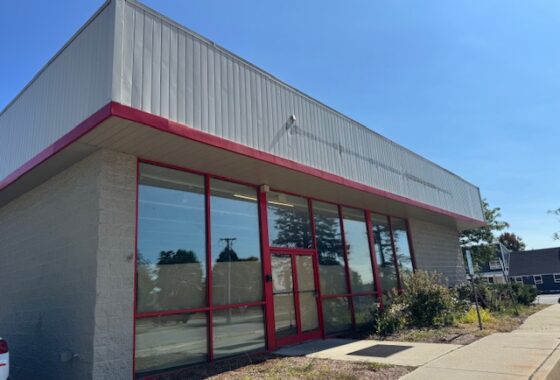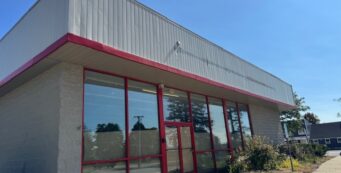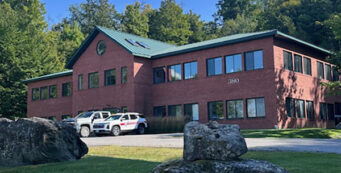By
Franco Faraudo
Editor, Propmodo
The built environment is being quietly reshaped by one of the oldest construction materials on earth: wood. But this isn’t the wood framing that dominated suburban housing in the post-war boom. The new wave of timber construction is mass timber, a category of engineered wood products—like cross-laminated timber and glue-laminated beams—that are strong enough to rival steel and concrete. What once seemed like a niche, almost experimental material is now becoming a legitimate competitor in commercial development.
Part of the appeal lies in sustainability. Concrete and steel are notorious carbon culprits, together accounting for nearly 15 percent of global emissions. Mass timber flips that dynamic. Trees absorb carbon as they grow, and when they’re harvested and engineered into structural panels, that carbon remains locked inside the building. That gives mass timber projects a dramatically lower carbon footprint. For cities and investors chasing climate goals, timber provides an attractive way to check both the ESG and design boxes.
The business case, though, goes beyond sustainability metrics. Mass timber allows for faster construction because panels are pre-fabricated, shipped, and assembled on-site like giant Lego pieces. That reduces labor costs and shortens build timelines—a real advantage in markets where delays mean millions in carrying costs. It’s also lighter than concrete, reducing the need for deep foundations and enabling construction on sites that might otherwise be cost-prohibitive.
Some of the most interesting projects highlight how far mass timber has come. In Milwaukee, the 25-story Ascent Tower by New Land Enterprises and Korb + Associates has claimed the title of the tallest mass timber building in the world. Its hybrid system combines cross-laminated floors and walls with a concrete core, demonstrating that timber can reach heights once thought impossible. In Portland, the Carbon12 building rose eight stories, showing early proof that timber could work in seismic zones with rigorous engineering. In Toronto, the Arbora complex used mass timber not just structurally, but as a design feature, with exposed wood interiors that give residential units a warmer, more natural feel than glass-and-steel towers.
Portland’s eight-story Carbon12, built by Kaiser + Path, became the nation’s tallest cross-laminated timber building in 2020, proving timber’s seismic strength while advancing sustainable urban design. The movement isn’t limited to headline-grabbing towers. Universities, offices, and civic buildings are increasingly turning to mass timber. Microsoft’s Silicon Valley campus incorporated engineered wood as part of its sustainability goals, while the University of British Columbia’s Brock Commons Tallwood House, at 18 stories, provides student housing while acting as a research showcase for timber construction. Even airports are joining the trend: Portland International Airport’s new terminal expansion features soaring timber roof panels, marketed as both an aesthetic statement and a climate-conscious choice.
Of course, mass timber is not without its hurdles. Building codes have historically been written around steel and concrete, creating regulatory barriers for new timber projects. Fire safety has been another sticking point, but extensive testing has shown that large timber panels perform well under fire, often better than unprotected steel, because the outer layer chars and protects the inner core. Insurance is another challenge, as carriers have been slow to update risk models to reflect timber’s actual performance. Each of these hurdles has slowed adoption but is steadily being addressed through updated codes, demonstrations, and policy support.
The growing pipeline suggests momentum is building. According to the Softwood Lumber Board, there are now more than 1,700 mass timber projects built or in design across the United States, a tenfold increase since 2013. Europe, particularly Scandinavia, has been even quicker to adopt, with timber skyscrapers already part of skylines in cities like Vienna and Oslo.
For real estate, this isn’t just a story about green design. It’s about market differentiation. Tenants increasingly want sustainable, wellness-oriented buildings, and timber provides both. Developers can market mass timber projects as forward-looking, environmentally responsible, and aesthetically unique. That can translate into higher rents, stronger tenant demand, and, ultimately, higher asset valuations.
What we are watching now is a transition from novelty to norm. A decade ago, mass timber was viewed as an architectural curiosity. Today, it is part of the mainstream conversation about how to build better, faster, and greener. Steel and concrete won’t disappear, but the real estate industry now has a third option—a material that carries not just structural weight but symbolic weight in a world increasingly defined by sustainability.








